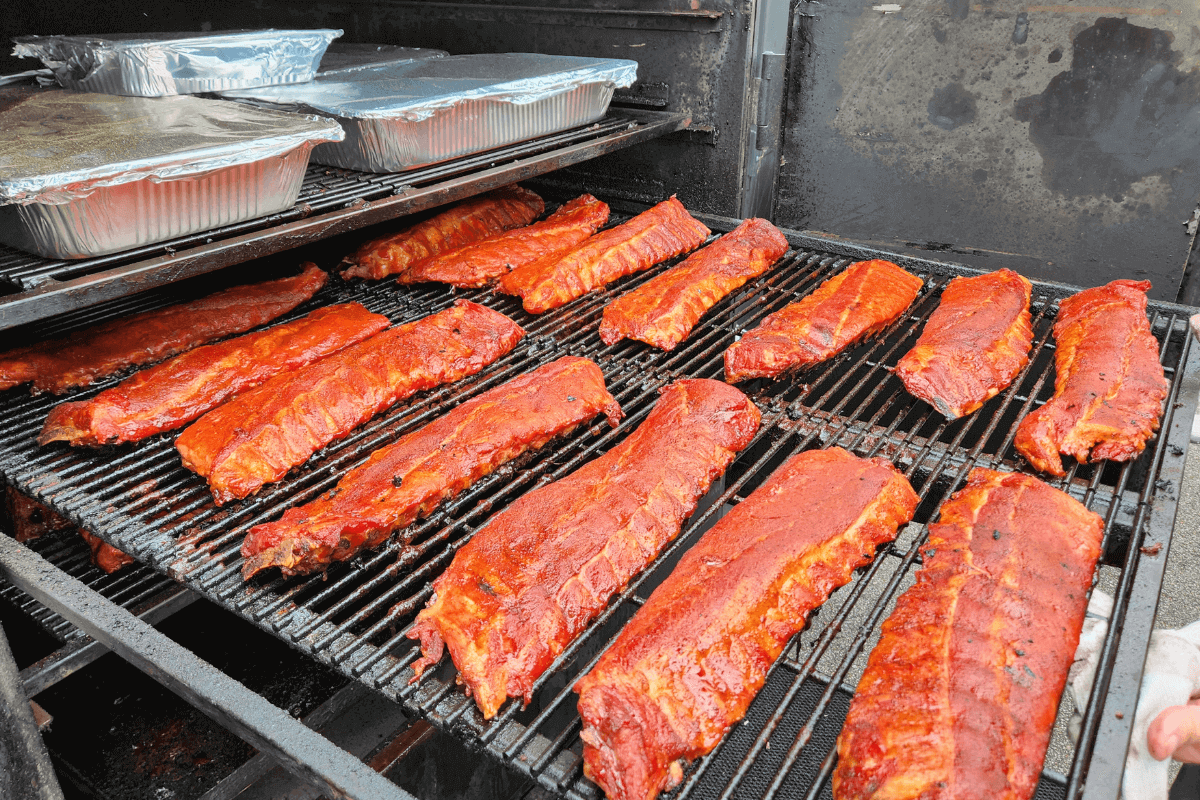Breaking Down the Differences Between Baby Back vs. Spare Ribs
Few things define barbecue like a rack of perfectly smoked ribs. But when you head to the butcher counter, you’re faced with an age-old choice: baby back ribs vs spare ribs. Which should you grab for your next cook? Both cuts have passionate fans and distinct qualities, from flavor and texture to cooking time and cost. This guide explains spare ribs vs baby back ribs in detail, so you’ll know exactly which rack belongs on your pit.
 What Are Baby Back Ribs?
What Are Baby Back Ribs?
Despite the name, baby back ribs don’t come from piglets. The “baby” simply refers to their smaller size compared to spare ribs. Cut from where the rib meets the spine after the loin is removed, these ribs are curved, short, and meaty. They’re sometimes labeled as loin back ribs or simply back ribs.
Baby backs are leaner with less connective tissue, which means they cook faster and tend to be more tender. Because of their smaller size and mild flavor, they’re a popular choice for casual grilling or weeknight BBQ sessions.
What Are Spare Ribs?
Pork spare ribs come from the belly section of the hog, closer to where bacon is cut. They’re larger, straighter, and carry more fat and connective tissue than baby backs. That extra fat renders slowly, giving spare ribs their signature richness and bold, pork-forward flavor.
Spare ribs often get trimmed into the famous St. Louis cut, where the cartilage, tips, and flap meat are removed for a neat, rectangular rack. St. Louis ribs are competition favorites because they cook evenly and present well.
Side Ribs vs Back Ribs Explained
Sometimes you’ll hear people talk about side ribs vs back ribs. Side ribs are another name for spare ribs, while back ribs are baby backs. Same cuts, different regional naming conventions. Understanding this helps avoid confusion at the butcher counter.
Flavor and Texture Differences
So, what’s better spare ribs or baby back ribs? It depends on what you’re craving:
- Baby back ribs – Leaner, tender, slightly sweet, with a milder pork flavor. Great for those who prefer a delicate bite.
- Spare ribs – Richer, meatier, with more fat and connective tissue. They deliver a smoky, savory punch that’s deeply satisfying.
Texture-wise, baby backs tend to have a cleaner chew, while spare ribs have more “bite” and juiciness when cooked properly.
Cooking Time and Methods
Cooking times differ because of size and fat content:
- Baby back ribs: 4–5 hours at 225–250°F on a smoker.
- Spare ribs: 5–7 hours at the same temperature.
If you’re short on time, baby backs are the easier choice. If you enjoy long cooks and want robust flavor, spare ribs are worth the patience.
Cost and Availability
Baby backs are often priced higher per pound, since they’re smaller and considered a premium cut. Spare ribs are usually more affordable and easier to find in bulk. If you’re feeding a crowd, spare ribs give you more meat per rack for the money.
Pork Spare Ribs vs Baby Back Ribs: Which Should You Choose?
Here’s a quick comparison to help you decide:
| Category | Baby Back Ribs | Spare Ribs |
|---|---|---|
| Size | Smaller, curved | Larger, flatter |
| Flavor | Milder, leaner | Richer, porkier |
| Cooking Time | 4–5 hours | 5–7 hours |
| Cost | More expensive | More affordable |
Ultimately, it comes down to preference: choose baby backs for quick cooks and tenderness, or spare ribs for hearty, flavor-packed BBQ sessions.
 FAQs
FAQs
What are baby back ribs?
Baby back ribs come from the upper ribcage near the spine. They’re shorter, curved, and leaner compared to spare ribs.
Are spare ribs the same as side ribs?
Yes. Side ribs is simply another term for spare ribs, often used regionally in butcher shops and grocery stores.
Which is better: baby back ribs or spare ribs?
If you like leaner, tender meat, go for baby backs. If you prefer bold flavor and more meat per rib, spare ribs are the way to go.
Why are baby back ribs more expensive?
They’re considered a premium cut because they’re smaller, leaner, and require more precision when trimming from the loin section.
Do baby back ribs cook faster than spare ribs?
Yes. Baby backs usually take 4–5 hours at 225°F, while spare ribs need 5–7 hours due to their size and fat content.
Conclusion
Now you know the differences in the great debate of baby back ribs vs spare ribs. Baby backs are lean, tender, and fast to cook, while spare ribs are hearty, flavorful, and perfect for long smokes. Whether you’re grilling for a quick family dinner or setting up for an all-day backyard feast, both cuts bring something special to the table. The choice isn’t about right or wrong—it’s about what flavor and experience you want at your next BBQ.
Check out some of our favorite BBQ supplies for ribs:
Visit Us at our Retail Store or Online BBQ Store
Our online BBQ store is open 24-7 but if you'd rather shop in person, visit our retail store in Northwest Arkansas. You can shop top-quality grills, smokers, the best BBQ rubs and sauces, accessories, and expert advice. Stock up on top-quality BBQ supplies to bring authentic smokehouse flavor to your backyard cookouts.
Natives to San Antonio, Texas we take Texas BBQ seriously and have a variety of items you won't find anywhere else.
Whether you're looking for something specific or just want to explore the best in BBQ gear, we’re here to help you cook with confidence. You’ll find top-quality grills, smokers, BBQ rubs, sauces, accessories, and expert advice you won't find online. Stop by and experience hands-on shopping the way it should be!
We're located at 14696 US Hwy 62, Garfield, AR 72732. We're open Tuesday through Saturday from 10 AM to 6 PM. Come pay us a visit!













